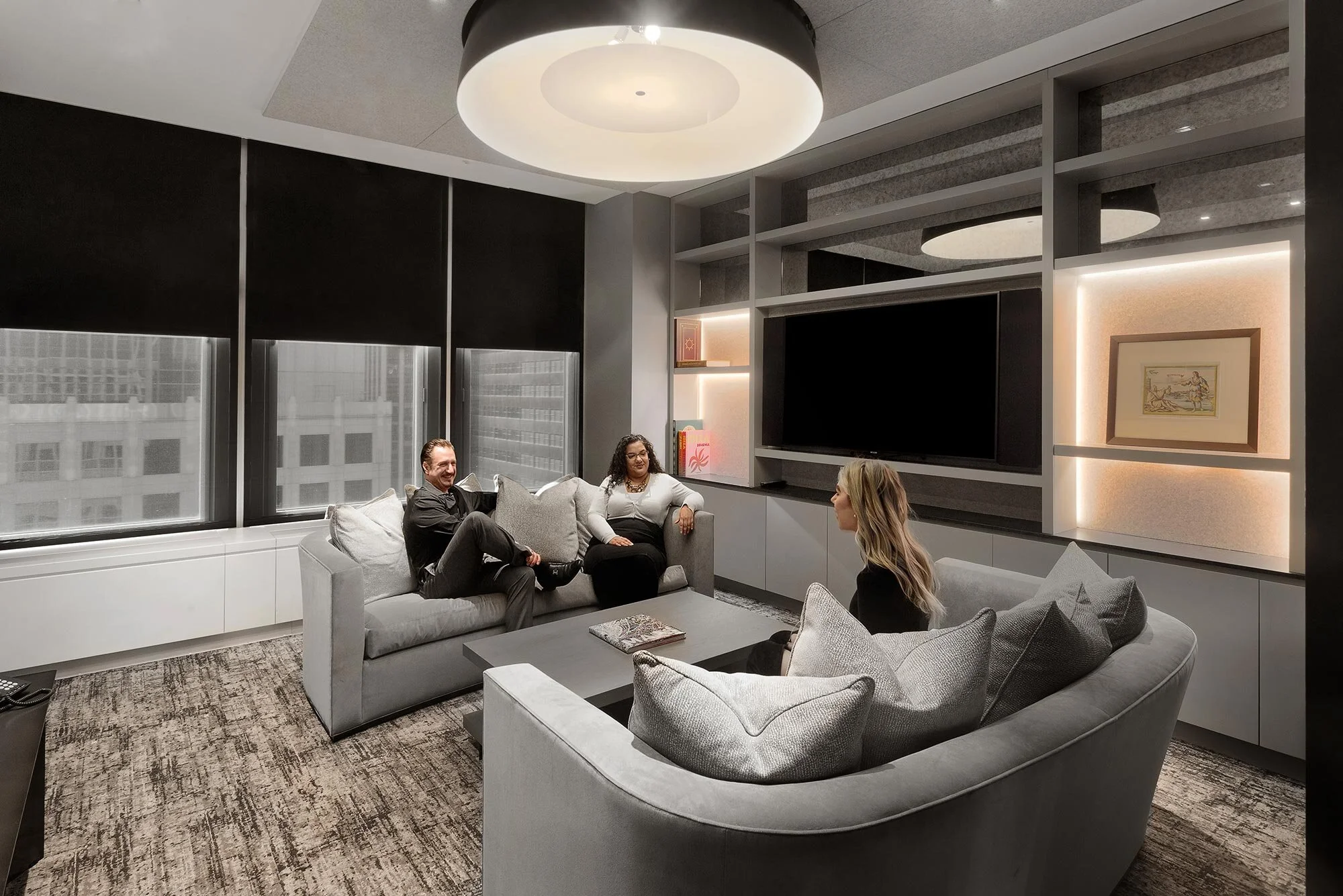
Confidential client EXPERIENCE HUB
This Client has offices globally and prefers each office to reflect the architectural character of its region. Their NYC client experience hub is imbued with a residential nature that also has a New York City flair.
TMA collaborated with the client’s curator to incorporate certain pieces from an extensive art collection, inspired by the company’s multi-national presence and comprised of old-world and modern geography and maps.
When the 30th floor penthouse became available above their 29th floor offices in Midtown Manhattan, this company decided to transform it into a client experience hub, replacing rented space in restaurants and hotels previously used for client interactions or to hold events.
Due to their 30th floor position and oversized windows with panoramic views, the client required extensive window treatment to manage daylight without losing the views entirely.
TMA chose solar shades with enough transparency for the vistas beyond. But since additional blackout shades were needed to support the technology displays, TMA sourced a sepia-toned etching of Lower Manhattan from the early 20th Century, and had it enlarged and imprinted onto the blackout shades.
In this way, the modern New York City views are replaced by a historic view when the blackout shades are drawn.
The design intent was to expose the structural beams in the double-height area of the floor reaching 22 feet, but the HVAC systems required the dropping of the ceiling plane below the actual beams. Therefore, TMA added faux I-Beams made of wood but painted to look like steel – matching the existing steel structural columns.
Industrial materials such as reclaimed wood, concrete, and steel complement each other in a loft-like, refined way.
A wide range of conferencing spaces, such as this lounge set up to act more like a study, support business meetings, and more informal gatherings and social events.
State-of-the-art audio-visual technology consists of projectors, mobile monitors to support various activities, and the ability to use mobile devices and laptops to interact with a presentation.
Another example of smaller conferencing space.










